Shipping a pontoon boat requires careful planning and proper documentation. Understanding the paperwork needed before transport begins can save you time, money, and potential legal issues. Many boat owners don’t realize the various documents required until they’re already in the process of shipping.
When transporting a pontoon boat, you need several essential documents including proof of ownership, registration, insurance, and potentially special permits depending on the boat’s size and your transportation route. These requirements vary by state and transport company, so gathering information early is crucial. Proper preparation ensures your boat transport experience goes smoothly from pickup to delivery.
Proof of Ownership
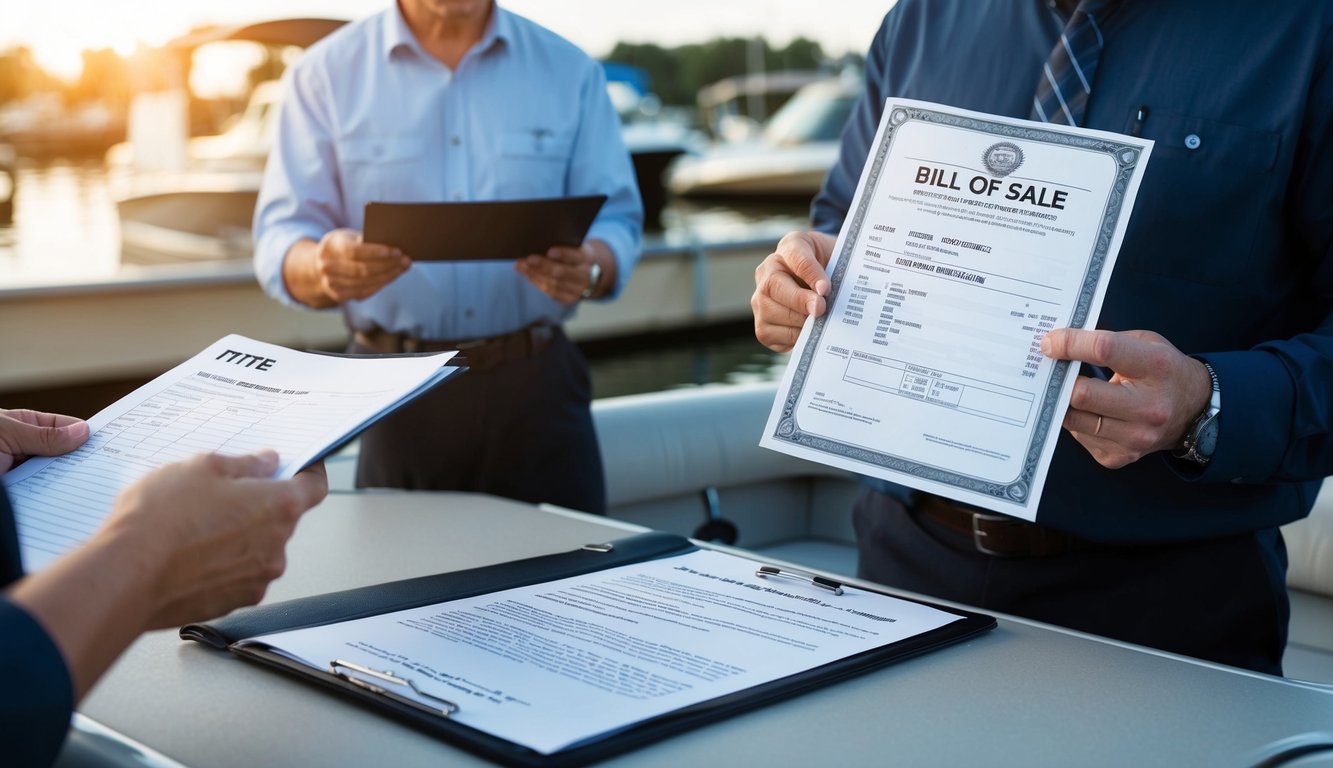
- When shipping a pontoon boat, you must provide proper documentation to prove you own the vessel. The most important document is the boat’s certificate of registration, which is a wallet-sized card showing your registered ownership.
- If you’ve recently purchased the boat, you’ll need the original certificate of title signed by the previous owner. This document serves as evidence of the transfer of ownership and is essential for shipping companies to verify you have the right to transport the vessel.
- In Wisconsin, the DNR requires specific documentation as evidence of ownership transfer. Without these papers, shipping companies may refuse to transport your pontoon boat.
- If you’ve lost your title, you can complete an Affidavit of Authority to Transfer Boat Title form. For missing registration certificates, you might need to file additional paperwork like a Release of Ownership Interest Request form.
- Always keep copies of your ownership documents when shipping your pontoon boat. This protects you and simplifies the process if questions arise during transport.
Bill of Sale

- A Boat Bill of Sale is a crucial document when shipping your pontoon boat. This legal document proves the transfer of ownership from the seller to you.
- Your bill of sale should include basic vessel information and the Hull Identification Number (HIN). These details uniquely identify your pontoon boat.
- Don’t forget to include engine information on the document. The make, model, and serial numbers of the motors are important details.
- If a trailer comes with your pontoon boat, add the trailer information to the bill of sale too. This includes the trailer’s VIN and registration details.
- Both buyer and seller need to provide their names, contact information, and sometimes ID numbers on the bill of sale. This creates a clear record of who participated in the transaction.
- The documentation process varies by state. You’ll likely need to submit the signed bill of sale along with title forms and registration documents to your state’s boating authority.
- Keep a copy of this document safe. It serves as proof of ownership during shipping and will be needed for registration purposes later.
Marine Insurance Policy
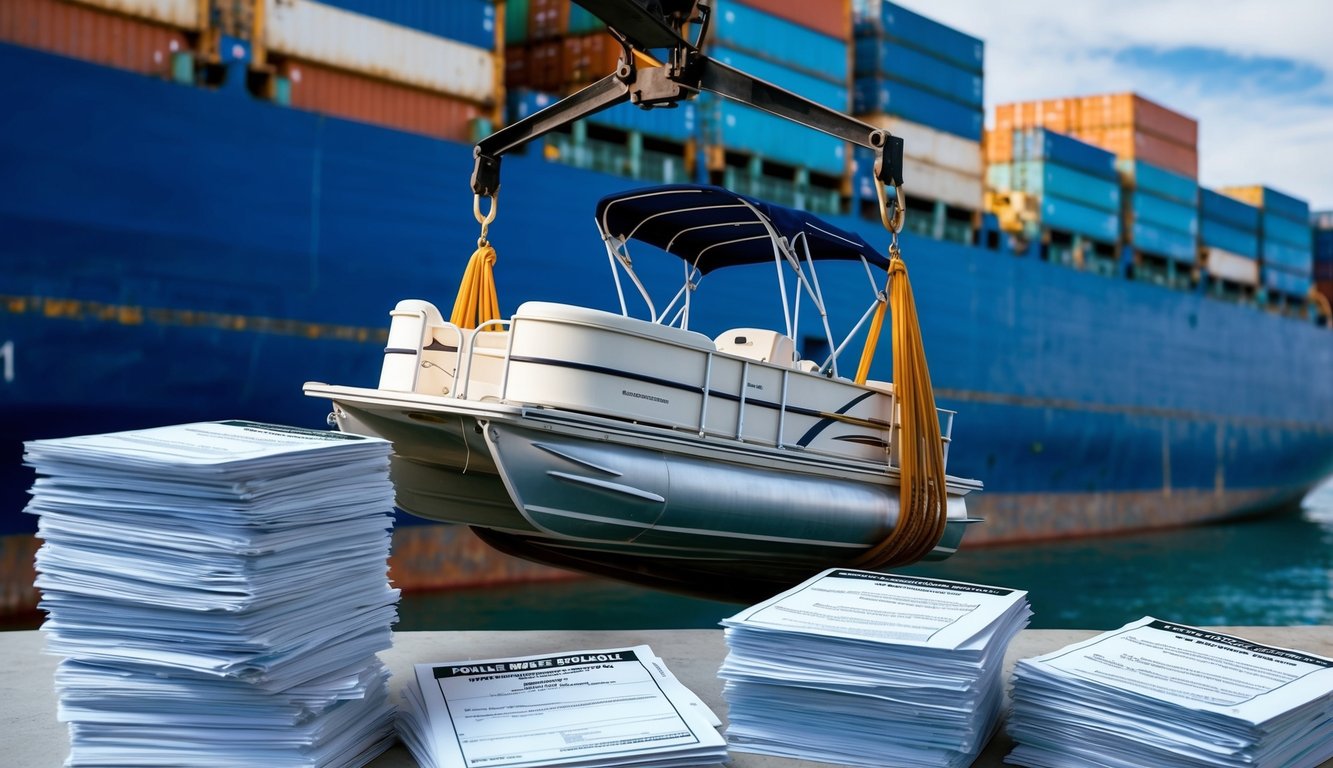
- When shipping a pontoon boat, a marine insurance policy is essential to protect your investment. This document provides coverage against potential damage or loss during transit.
- Your insurance policy should be dated before or on the shipment date. Make sure it clearly lists all relevant parties, including the liquidator or agent at the destination port.
- The policy should detail what damages are covered during shipping. This typically includes protection against water damage, collision, and other transit-related incidents.
- You need to keep a copy of this policy with your other boat documentation when shipping. Store it in a waterproof container to ensure it remains legible if needed.
- Different policy types offer varying levels of coverage. Some may cover the full value of your pontoon boat, while others might only cover specific damages.
- When selecting a policy, consider the shipping route and potential risks. Cargo insurance protects you from losses that might occur during the journey.
- Review all insurance terms carefully before finalizing your shipment arrangements. This ensures you understand exactly what’s covered and what isn’t.
State Registration Paperwork
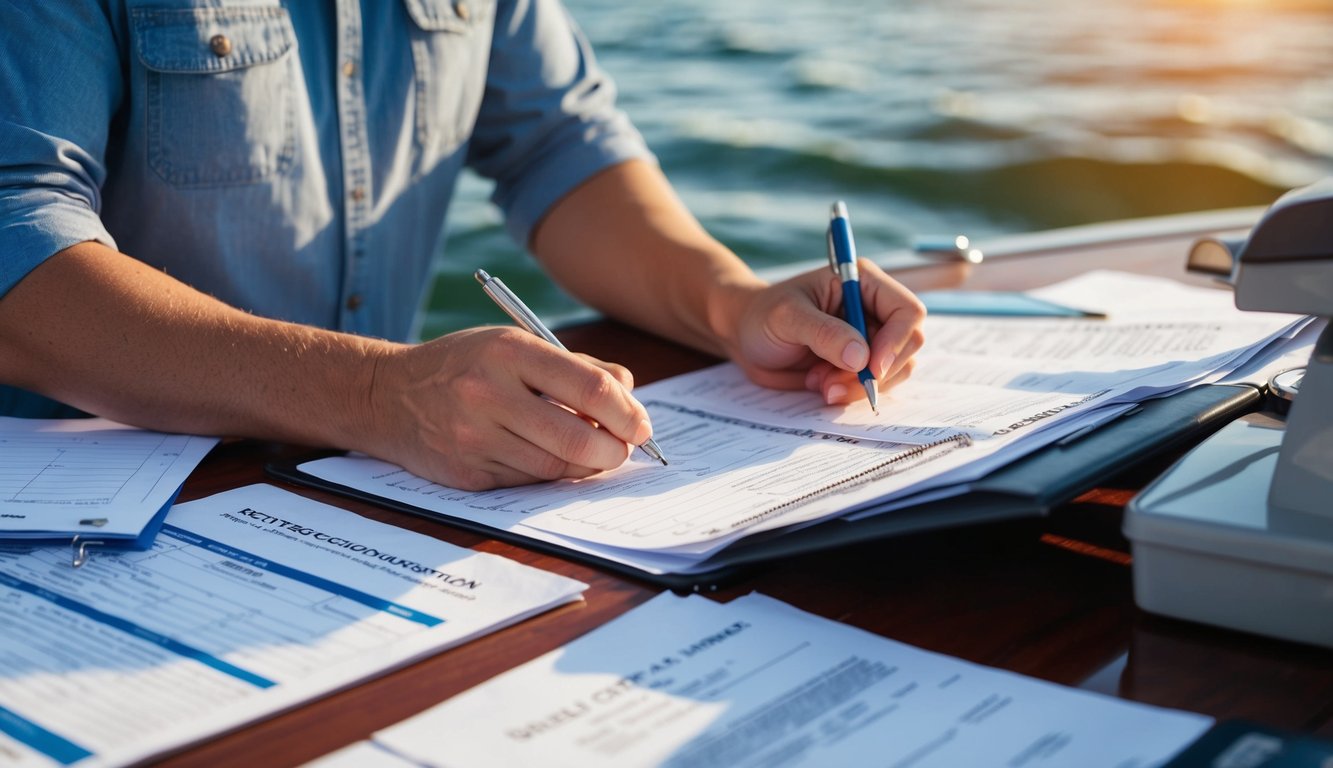
- When shipping a pontoon boat, you need to ensure your state registration paperwork is in order. Most states require boats to be properly registered before they can be used on public waterways.
- The typical registration documents include a completed boat registration application form. In Texas, you’ll need to submit the Vessel/Boat Application form to register your pontoon boat.
- You must also provide proof of ownership when registering your boat. This can be a manufacturer’s certificate of origin, a bill of sale, or previous registration documents if you’re transferring ownership.
- Don’t forget to pay the required application fees when submitting your paperwork. These fees vary by state and sometimes depend on the size of your pontoon boat.
- Keep copies of all your registration documents when shipping your pontoon boat. This helps prove ownership during transport and makes the registration process in the new location smoother.
Transport Permits

- When shipping a pontoon boat, you’ll likely need transport permits if your vessel exceeds standard size limits. Most pontoon boats are wider than the standard legal width of 8’6″, requiring special documentation.
- Different states have varying requirements for oversized loads. You should check the regulations for each state your boat will travel through during transport.
- Permits typically include restrictions on travel times and routes. Some only allow daytime travel and may require specific travel corridors for oversized loads.
- The transport company often handles permit acquisition as part of their service. However, you should confirm this when booking to avoid delays.
- Permits usually require additional safety measures such as flags, banners, or escort vehicles depending on the boat’s dimensions.
- Remember that permit processing can take several days, so plan ahead. Starting the permit process early helps ensure your pontoon boat transport stays on schedule.
Driver’s License Copy
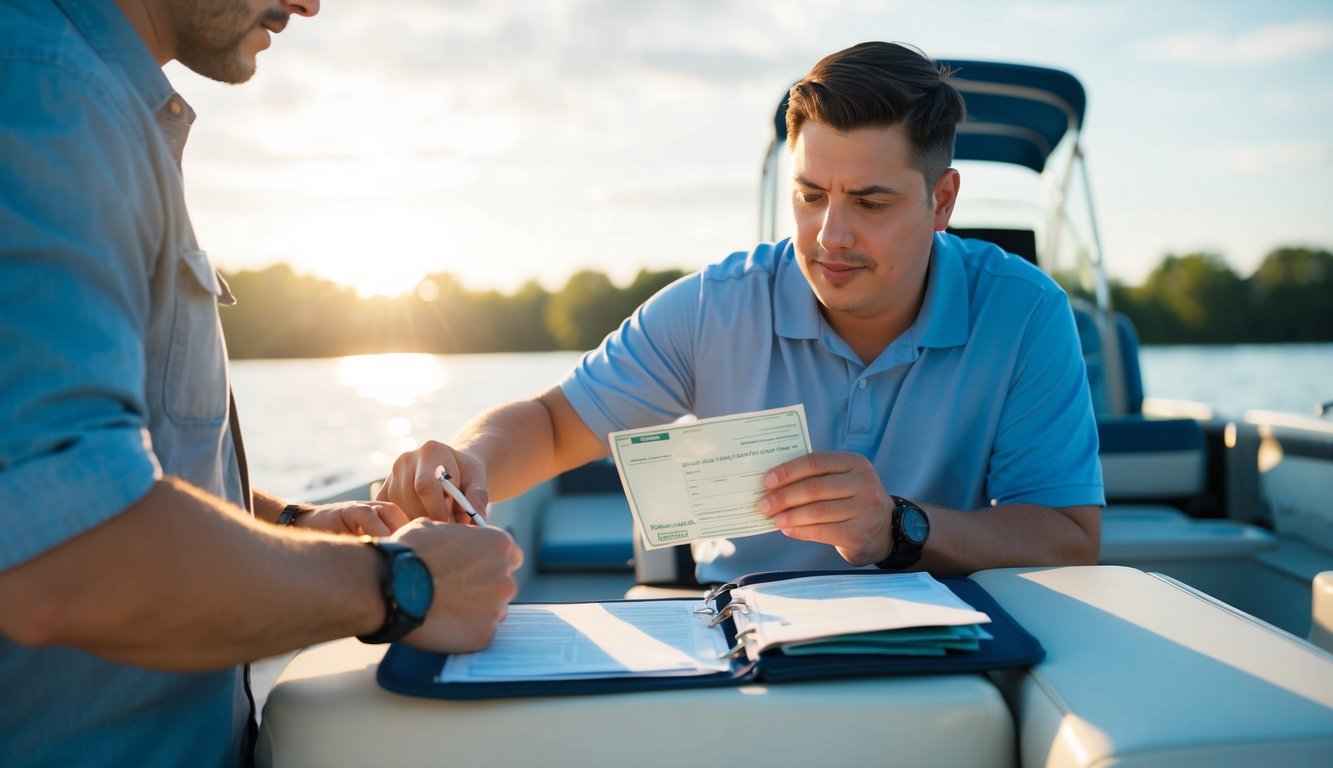
- When shipping a pontoon boat, a copy of your driver’s license is an essential document to include. This helps verify your identity as the boat owner or authorized shipper.
- Make sure the copy is clear and legible. Both the front and back of your license should be copied to provide complete identification information.
- If you have an out-of-state driver’s license, you may need to provide additional documentation. In South Dakota, for example, you’ll need to provide proof of your social security number along with your out-of-state ID.
- Keep a second copy of your license for your own records. This can be helpful if the original copy gets lost during the shipping process.
- The shipping company will use your license information to create the bill of lading and other transport documents. Having this ready speeds up the paperwork process considerably.
- Some shipping companies may accept digital copies sent via email, while others require physical copies. Check with your specific shipper about their requirements before finalizing arrangements.
Federal USCG Documentation

- Boats that meet certain requirements can be documented with the U.S. Coast Guard instead of state registration. To qualify for USCG documentation, your vessel must be wholly owned by a U.S. citizen and measure at least five net tons. Most pontoon boats over 25 feet typically meet this size requirement.
- USCG documentation provides proof of U.S. nationality for your vessel, which can be important when traveling in international waters. It also offers certain legal benefits and may be required by some lenders if you’re financing your pontoon boat.
- When your boat is documented, you’ll need to display the vessel name and hailing port on the hull. The hailing port must include the state, territory, or possession where it’s located.
- To apply for documentation, you’ll need to submit various forms to the National Vessel Documentation Center. These typically include proof of ownership, proof of citizenship, and the application form.
- You must renew your USCG documentation annually. Keep in mind that even with federal documentation, you may still need to comply with certain state requirements.
Notarized Bill of Sale
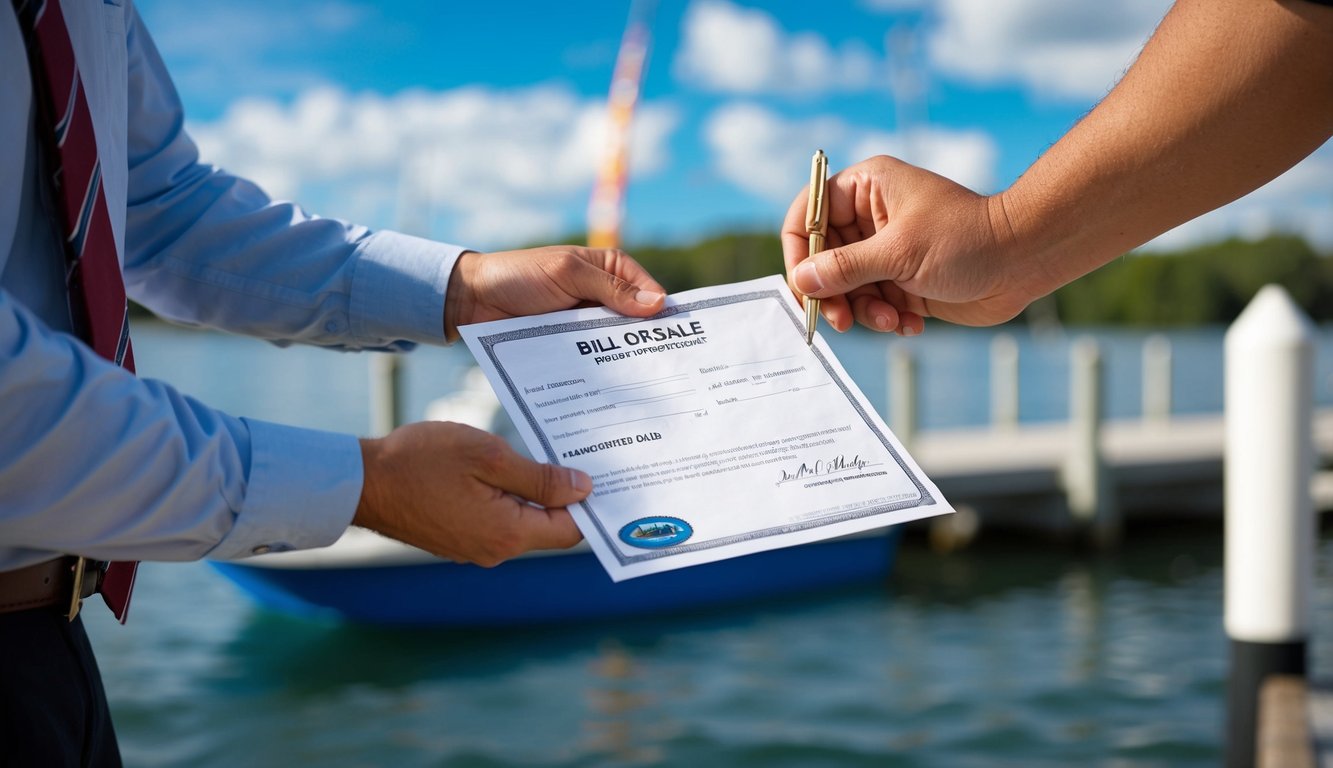
- A notarized bill of sale is a crucial document when shipping a pontoon boat. This legal paper proves the transfer of ownership from the seller to you.
- When buying a pontoon boat, you should get a bill of sale that includes both parties’ information, the boat’s details, and the purchase price. Having this document notarized adds an extra layer of legitimacy.
- The notarization process involves having a licensed notary public witness the signing of the document. They verify the identities of everyone involved and confirm that signatures are genuine.
- In many states, a notarized bill of sale is required for boat registration. This document serves as proof of ownership when you register your pontoon boat.
- Make sure the bill of sale includes the hull identification number (HIN), boat make, model, year, and any included accessories or motors. This detailed description helps prevent disputes later.
- Keep the original notarized bill of sale in a safe place. You’ll need it when registering the boat and possibly when arranging shipping services.
Original Ships Station License
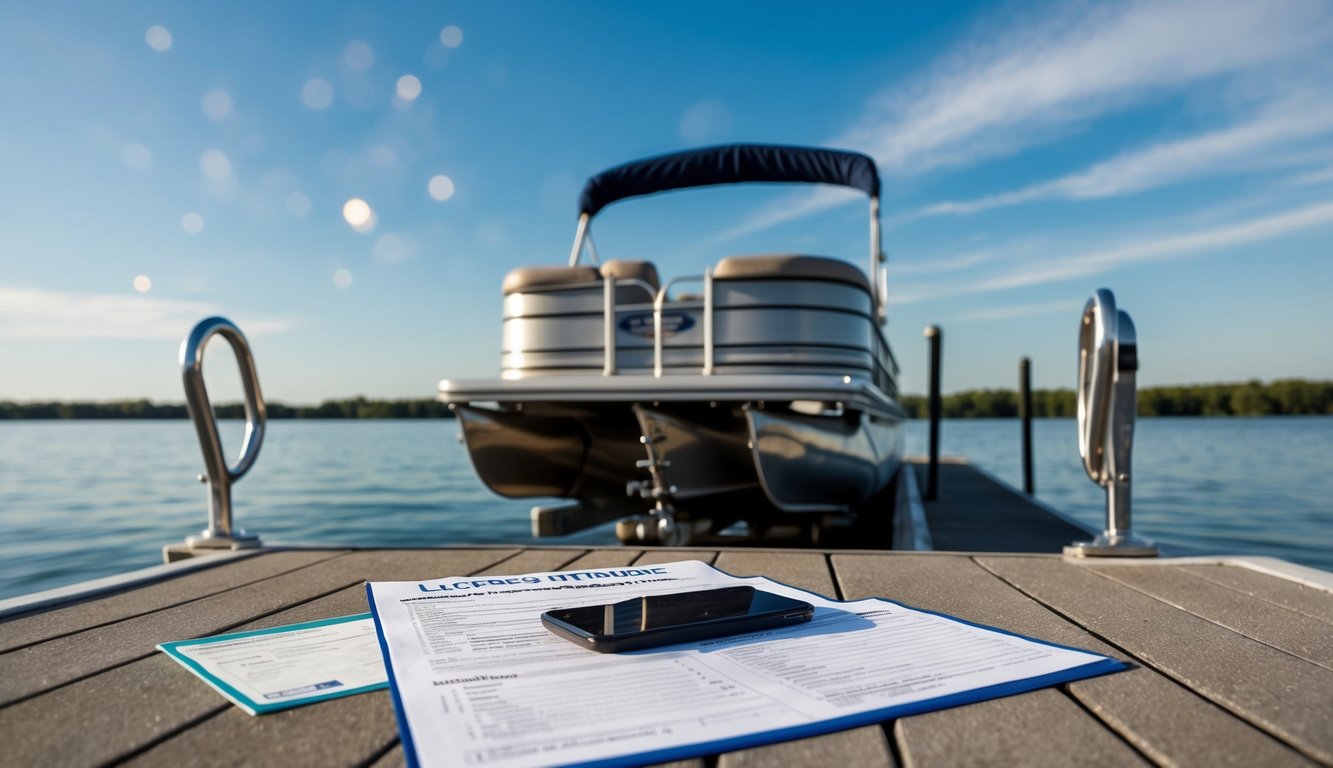
- If you’re shipping a pontoon boat, you may need to keep an Original Ships Station License on board. This document is required for certain types of marine radio equipment operation.
- According to FCC regulations, you don’t need a license to operate a marine VHF radio, radar, or EPIRBs aboard voluntary ships operating domestically within U.S. waters. However, you will need one if you plan to travel internationally with your pontoon boat.
- It’s important to note that the documentation must be original, not a photocopy. Keep your Original Ships Station License on the boat at all times when operating with radio equipment.
- To obtain this license, you must apply through the Federal Communications Commission. When you obtain a Ship’s Station License from the FCC, they will provide an MMSI number that is valid for international cruising.
- After applying, a link to print your official copy of your license will be automatically emailed to you when it’s approved, if you provide an email address on your application.
Cargo Capacity Plate Information
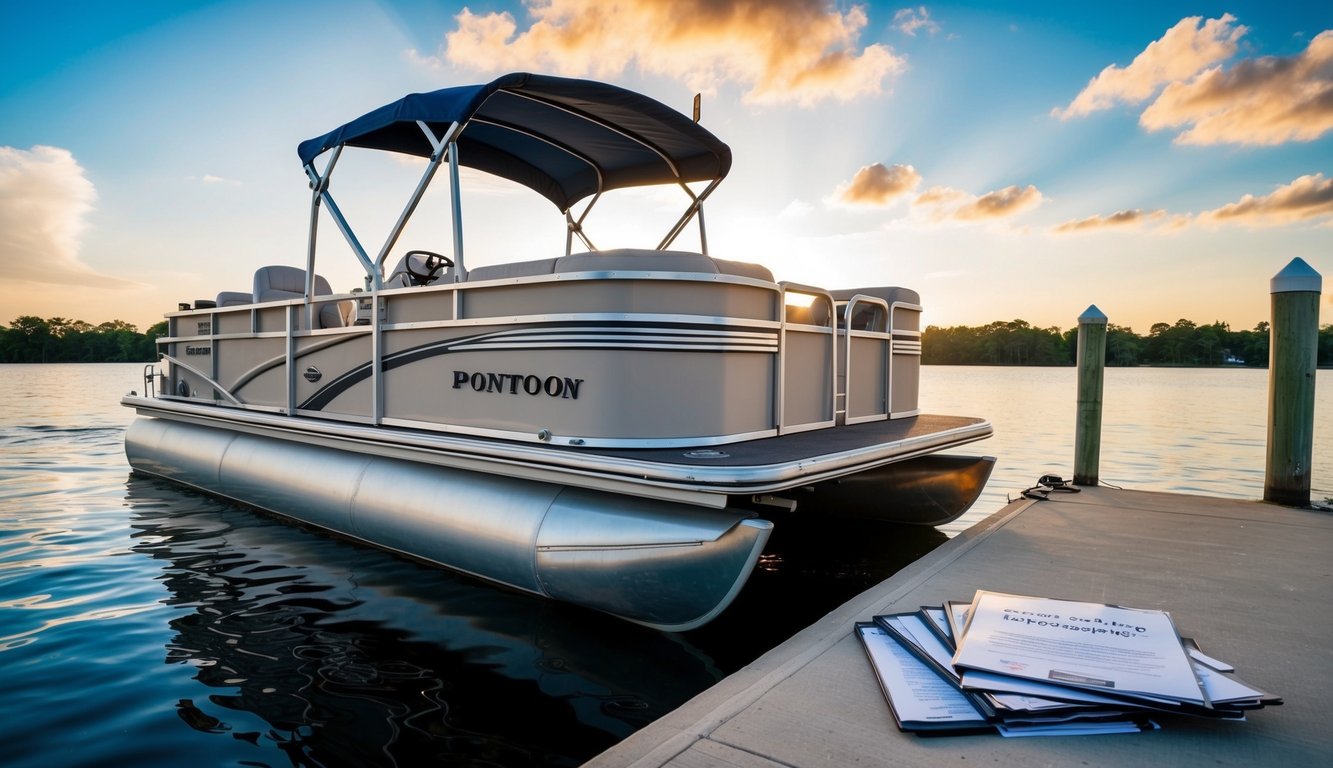
- When shipping a pontoon boat, you’ll need to provide accurate information from the cargo capacity plate. This plate is required for all powerboats less than 20 feet in length and contains vital safety information.
- The capacity plate displays the maximum weight your boat can safely carry, including passengers and gear. It also shows the maximum number of people allowed on board and the maximum horsepower rating for the engine.
- You can typically find this plate near the helm or operator’s position. If your boat is missing its capacity plate, you’ll need to get a replacement before shipping.
- Capacity plates help ensure your pontoon boat is transported safely without being overloaded. The shipping company will need this information to properly secure your boat.
- If your pontoon boat’s capacity plate is damaged or missing, you might need to have a replacement made. The information must match your specific boat model.
- For boats sold in Canada, special capacity tags that meet Canadian requirements are available for vessels up to 6 meters.



